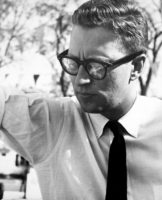Built to house the New York City Pavilion for the 1939 World’s Fair, whose theme was “World of Tomorrow,” the now nearly 75-year-old Queens Museum of Art building has certainly seen its share of yesterdays. It was a recreation center, a home to the General Assembly of the newly formed United Nations from 1946 to 1950, a pavilion once again for the 1964 World’s Fair, and for much of the period since then, divided up into an art museum and an ice skating rink.
Plans to have the museum take over the entirety of the 105,000-square-foot limestone colonnaded structure have had an equally intriguing, and seemingly just as lengthy history. In 2001, Eric Owen Moss’s proposal to surgically remove the central portion of the building and re-enclose it with an undulating glass “drape” won a design competition for the museum’s expansion. The arrival of new museum executive director Tom Finkelpearl, however, saw the departure of Moss and the introduction of a far less radical expansion scheme which, since 2005, has been carried out by the New York office of Grimshaw with executive architect Ammann & Whitney. Original plans to begin construction by 2007 were delayed several times, with groundbreaking not taking place until 2011.
This Saturday, the multi-faceted institution—rebranded as Queens Museum to reflect its dedication not only to contemporary art, but also history, education, and community outreach—at last opens to the public following a two-and-a-half-year, $69 million construction project and a ribbon-cutting ceremony last week presided over by outgoing New York City mayor Michael Bloomberg, who called supporting cultural institutions “essential” to the five borough economic plan he’s touted since taking office 12 years ago.
For his part, Finkelpearl stressed the museum’s commitment to “openness,” both figuratively and physically in the design of the space. The main feature of the Grimshaw design is a 30-foot-tall daylight-diffusing structure, referred to as the “lantern,” suspended from a new skylight over the central, large works gallery. A suite of smaller galleries for more light-sensitive works surrounds the central gallery, with louvers to control daylight levels. (For details on the daylighting scheme, see this story from 2008, shortly after Grimshaw developed the scheme.)
“Our goal for the design was to reinforce the mission of the museum within a historic building that has an architectural quality of its own,” says Grimshaw partner-in-charge Mark Husser.
The design also reconnects with the surrounding Flushing Meadows Corona Park by shifting the main entrance to the west façade, in axis with views to the Unisphere, an iconic remnant of the 1964 fair in the shape of a giant globe. The west façade is also the location of Grimshaw’s other main intervention. Visible from the Grand Central Parkway, the architects inserted a sculptural metal entry canopy and a series of glass panels equipped with programmable LED lighting which spans the length of the building.
One thing that hasn’t changed—the nearly 10,000-square-foot Panorama of the City of New York. The largest architectural scale model in the world is still on view, and remains the jewel in the crown of the Queens Museum’s collection.













Post a comment to this article
Report Abusive Comment